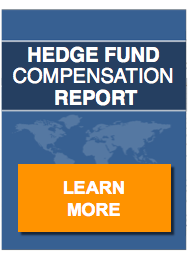The year gone by: One of record-breaking index growth, an explosion in the growth of the number of alternative investment firms, strategies that stretched the bounds of human imagination, and the establishment of long-delayed and much-scrutinized regulations. Whether it was a good year or a bad one for the hedge fund industry is a matter of perspective, but 2013 was certainly an eventful one.
Performance vs. Market
Final tallies are still pending as of this writing, but Bloomberg reported in December that hedge funds as a whole underperformed the market woefully. Part of that shortfall is an almost unfair benchmark, with the S&P 500’s 30-percent calendar-year growth. Even so, hedge fund returns were anemic by almost any measure. According to Bloomberg, with three weeks to go in the year and the S&P already up 29 percent, hedge funds scraped up a paltry 7%. Other sources call it closer to 8%, but that’s hardly more encouraging. According to CNBC hedge fund reporter Kate Kelly, the biggest success stories among “the hedgies,” as she calls them, was Glenview Capital’s Opportunities Fund, an aggressive instrument that achieved a 97 percent return.
That hedge funds as a whole underperformed the market isn’t news in itself. The last time that didn’t happen was in the year everyone would like to forget, 2008, when hedge funds lost a mere 19 percent compared to the S&P’s negative 37 percent.
That might not be a bad thing, though. They’re called hedge funds for a reason. They’re supposed to be contrarian bets. Whatever else 2008 was, it was an inflection year, when the market’s direction changed drastically and suddenly. Hedge funds’ best year might have been 1993, the first foaming of the dot-com bubble.
Inflows and Outflows
Apparently, there are a lot of contrarians out there. According to Business Insider, hedge funds reversed a multi-year capital outflow trend. The $146 billion invested in 2013 more than erased the $110 billion outflows over the previous three years.
Nobody knows exactly how much money is invested worldwide in hedge funds, but estimates tend to be in the same neighborhood. Eurekahedge calls it $2 trillion while Bloomberg claims $2.5 trillion. Whatever figures are more precise, it is safe to say that, as modest as hedge funds’ return on assets were in 2013, their growth in new assets under management were even smaller. Still, it was a positive number and those whose management fee is 2 percent gladly took it.
The anemic inflows are not confined to qualified investors’ accounts. They reflect the broader market. The long-predicted mass rotation from bonds into stocks never occurred, according to the Wall Street Journal. It’s expected soon. Really. Any day now. But as of now, it hasn’t happened yet. People are still gun-shy about moving their money back into an arena where they put their principal at risk.
Strategic Winners
Of course, we shouldn’t equate hedge funds with stock markets. It’s a widely estimated that roughly two-thirds of these funds are equity funds, and that most of those are long-short on paper but long-only in the portfolio. So what were the best strategies in 2013? To the extent fund managers stuck to stocks, it was a matter of being in the right sectors, according to CNBC’s Kelly: healthcare and financials.
But the best of the best didn’t just surf; they made the waves. Event-driven strategies were the ticket to success last year. Glenview coined the term “constructivist” to describe its approach of shareholder activism and support for current management.
Even so, stocks in general were not as kind to hedge fund managers as bonds. The fixed-income securities of distressed companies were a very good place to grow money in 2013, according to another CNBC report. The once-again-conservative mortgage-backed securities could get investors the same 8% as their equity-trading peers, but with considerably less risk.
Dreaded Regulation
Last year will long be remembered as the year Dodd-Frank became an actual thing and U.S. hedge funds had to register with the SEC. Some managers considered this an inconvenience, according to a Financial Times report, while others welcomed it as a bona fide to present to prospective investors. In any case, there was little getting around it. In consonance, the United Kingdom established the Financial Conduct Authority and the European Union set up the Alternative Investment Fund Managers Directive.
This was also the year that American funds could benefit from the JOBS Act, which eased restrictions on direct solicitation of funds. But since the pool of qualified investors remains unchanged, there has been little immediate rush to advertise on Facebook or hire spokes-models.
But still, the new standard of accountability wasn’t in itself the biggest headache for hedge fund managers. It was the additional cost, which many fear will increase the barriers to entry. Don’t bother talking to KPMG unless you’ve got at least $700,000 to retain their compliance services.


